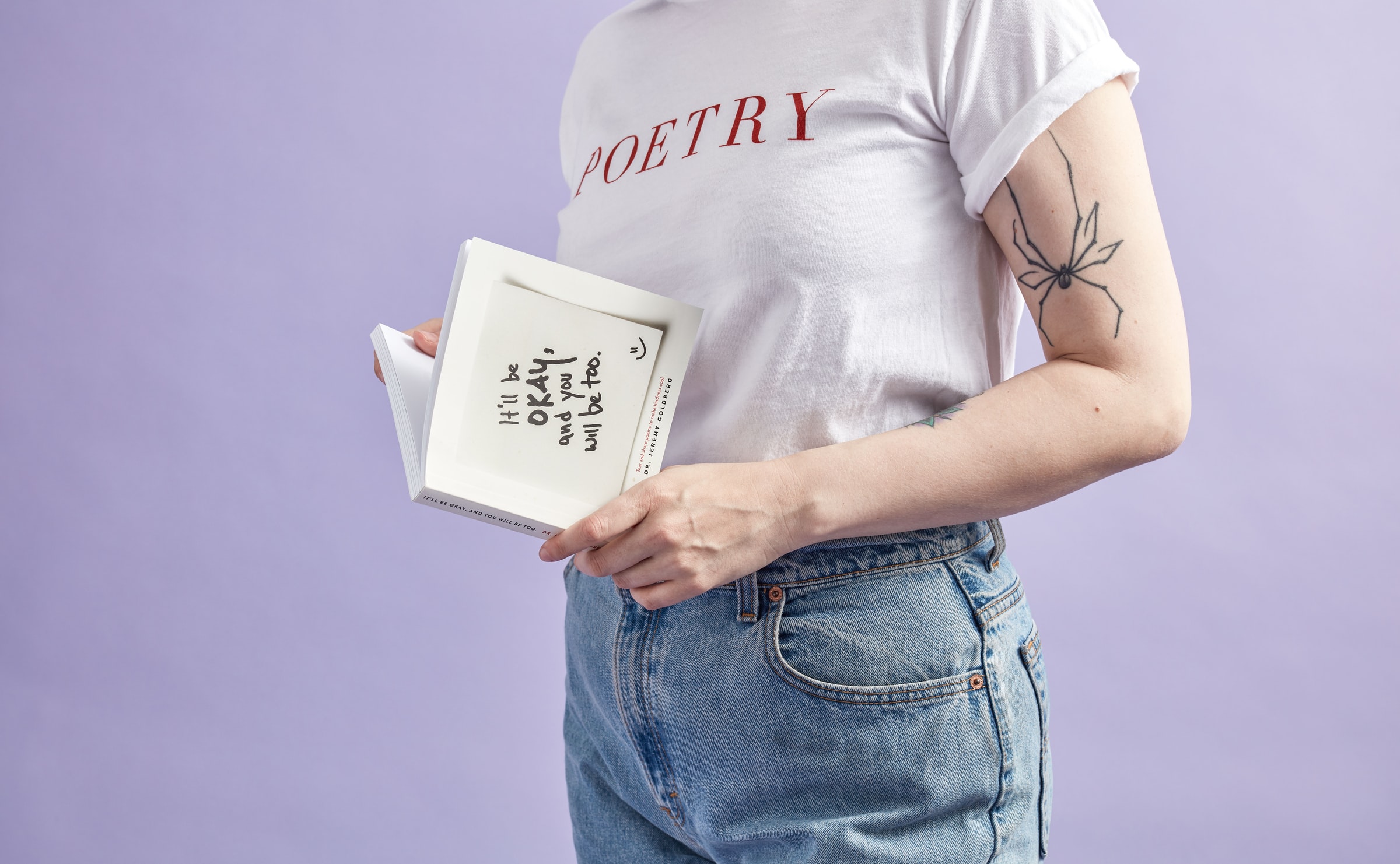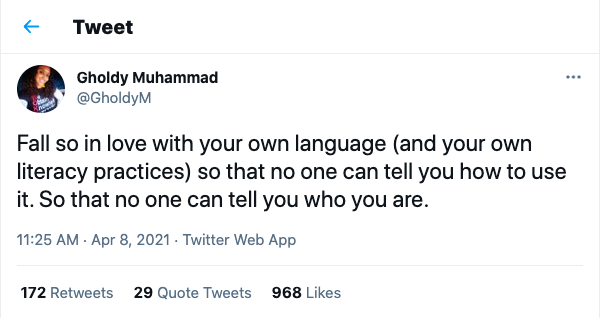Poetry by Manize N.

View Manize’s Original Task
View Manize’s Modebending Task
As an English major and literature lover, my affection and interest in poetry came late. As an angsty teenager, I railed against the genre because I had difficultly understanding the obscure meanings and messages in the words of long-gone poets, and let’s face it, I had no life experience to understand it. The difference came when I heard poetry – the rhythm and cadence – and it became lyrical. When spoken, poetry is lifted off the page and transformed into a transcendent and magical experience – like listening to the waves crashing at the seaside, birds chirping, or the symphony.
Hearing Manize’s poem, What’s in my bag, you ask? evoked that same kind of magic for me.
Production and Tools
As I was interested in everyone’s production tools and process, I reached out to Manize to ask for more details:
I recorded the video on my laptop using a program called Camtasia. I have version 9. It is a highly intuitive audio and video recording and editing tool. I used my regular iPhone earphones/microphone to record the audio. I was able to add the background music mp3 directly into Camtasia. I downloaded the .mp3 from a royalty-free platform called Purple Planet (https://www.purple-planet.com/).
Our process was similar in that we both recorded our own voices and incorporated other sounds while producing our audio files. I did change my voice with Adobe Audition to create a voice for my character, but Manize’s voice remains unchanged. We shared a short exchange about our reluctance to record our own voices – is there anyone who loves the sound of their own voice? – but it is Manize’s voice reading her poem that makes this production so evocative. Listening to her voice and words, my heart swelled with admiration and emotion, and I got goosebumps.
Literacies & Theories
Both Manize and I privileged more traditional literacies in our decisions to write poetry and narrative. But by making them multimodal, they become alive, which makes them more accessible and engaging for our audiences, as well as for ourselves.
Manize shared this reflection about her experience with this multimodal task:
This exercise was challenging, because it was difficult for me to grasp initially what was required exactly. However, as I progressed through the task, I was able to connect this to the example of “Transformed Practice” (NLG, 1996, pg. 83), in the sense that I was able to recreate the meaning or redesign this task of meaning in a different context. At the heart of learning is motivation. While doing this task, I realized that I was able to express myself better through a poem as opposed to taking a picture and writing about the items. Because I had the freedom to choose the way I wanted to learn, I was more motivated to learn. As an educator, I was able to connect this to the concept of “Situated Practice” (NLG, 1996, pg. 85), as it further reaffirmed my belief that a learner’s affective and sociocultural need must be accounted for and guided learning experiences must be created to enable the same.
I’m with her. When we were given the opportunity to produce multimodal texts, we had more agency and motivation than if our only option was to produce traditional texts. Multimodal production celebrates a range of literacies giving individuals the power to express their identities and share their experiences. This week, I encountered a Tweet by @GholdyM with a powerful message about honouring one’s literacies and subsequently, one’s identities:

As educators, we need to honour, respect, and champion all the different literacies our students possess – the traditional school literacies and the ones they have developed in their outside, daily lives – and the way that we can do that is by creating opportunities for students to use those literacies in the classroom. We need to bring meaning-making production and assessment into the 21st century by designing teacher and learning opportunities that inspire creativity, engagement, and new media (Kalantzis & Cope, 2010).
References
Kalantzis, M. & Cope, B. The Teacher as Designer: pedagogy in the new media age. E–Learning and Digital Media 7(3) https://doi.org/10.2304/elea.2010.7.3.200
The New London Group. (1996). A pedagogy of multiliteracies: Designing social futures. Harvard Educational Review 66(1), 60-92.